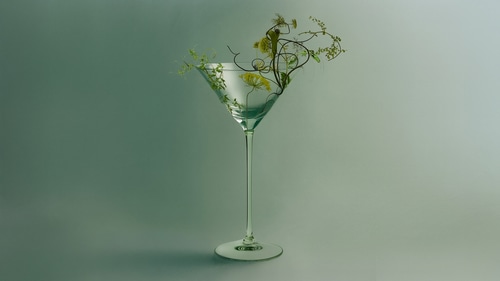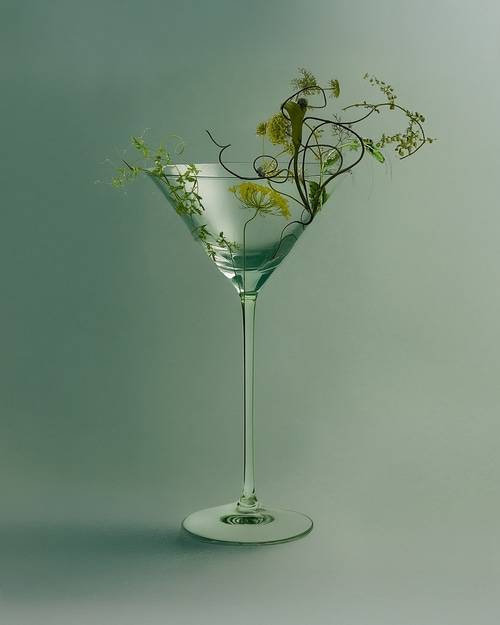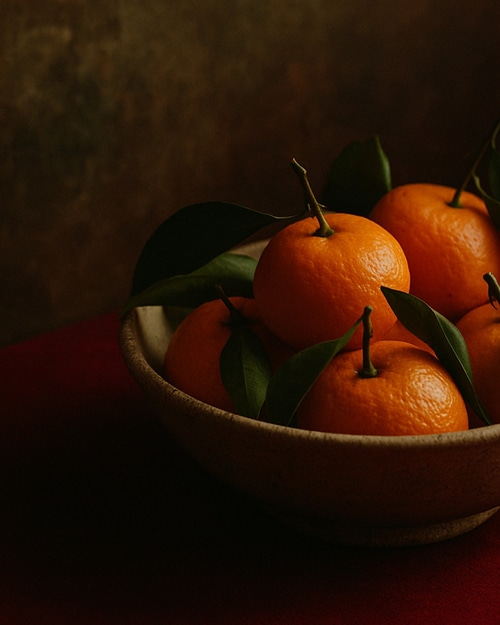

What is the future of drinking?
Today, we want what we put in our bodies to be meaningful: for drinking to have purpose; enhance our social experiences; and symbolically align with what we found powerful in culture today. This is our rulebook for how brands – alcohol or beyond – can thrive in this new era of consumption.
-
At Al Dente, we’re true believers that ‘conscious hedonism’ is the true form of luxury. There’s perhaps no better segment of the luxury industry today that better demonstrates this philosophy in action than wine & spirits.
For years, Western media has been flooded by headlines about how Gen Z drink less than previous generations. And this is certainly the case: research indicates this generation drinks 20 percent less alcohol per capita than millennials did at the same age. A 2025 major survey showed that this moderation may only speed up – 65% of surveyed Gen Z Americans say they plan to drink less this year, with nearly 39% reporting they’d refrain from drinking altogether.
However, notably, France, the home to so many of the world’s leading alcohol companies, is the rare exception of a country where young people have shown no meaningful decline in drinking over recent decades. For local decision makers in these industries, it’s thus crucial to have an international mindset moving forward, and look beyond the ingrained cultural norms here at home.
Whether it’s in the USA or in China (where drinking culture is going through major societal shifts) or broadly across the globe, with major policies being rolled out taking aim at alcohol (over)consumption, the future of drinking is certainly going to look very different this century than last.
In an era of ‘conscious hedonism,’ we’re engaging with consumption, whether it’s perfume or wine, in radically new ways. Here’s how we feel brands can raise a glass and celebrate this shift, whether they’re a traditional alcohol luxury player adopting new strategies across product or storytelling, or a brand from outside the industry wanting to join the party.
THE FUTURE OF DRINKING IS….
FUNCTIONAL
‘Conscious hedonism’ means we want our vices to have a purpose. This has resulted in a new age of the ‘functional beverage.’ Whether alcoholic or not, we want to think about what a drink will do for us. Will we feel hungover? Will we be inspired somehow? Will we even gain health benefits?
Giving beverages real purpose can resonate from CPG through luxury alcohol. See sodas with a twist – like Poppi, the ‘prebiotic soda’ brand just acquired by PepsiCo for 1.95 billion dollars. While the brand features a range of fun flavors and ultra-colorful branding, it rose to fame due to its reported ‘gut health benefits’ – making it the perfect acquisition for a conglomerate so invested in soda, which is now reaching all-time consumption lows.
Other brands lean all the way into their health benefits and position as true alcohol alternatives, like Bella Hadid-founded Kin Euphorics, which is ‘rooted in Ayurvedic medicine’ and full of adaptogens, nootropics, and botanics ‘to achieve an elevated state of health, mood or well-being.’ Yet even alcohol brands like Holistic Spirits Co., co-founded by actor Woody Harrelson, too are leaning into the functional, infusing their vodka with ‘the power of plants.’
Just about every category of drink is now being more carefully considered for the functional benefits – whether for alcohol or non-alcohol, coffee or tea, workout drinks or beyond. (Fun fact: the strategist currently writing this article is drinking a Rebbl protein smoothie that features 320 mg of ashwagandha extract, 250 mg of maca root extract, 100 mg of reishi mushroom extract, and 4 grams of MCTs. Whether that is all necessary is anyone’s guess, but it does taste great!).
→ For legacy players, product innovation and smart acquisitions will play a key role here moving forward. But whether a new player or a centuries-old heritage brand, it’ll be important to also consider how we market or create the storytelling around the drinks we sell. For example, take a look at Darts Bourbon: a new premium bourbon marketed as being the perfect bourbon to drink alongside smoking cigarettes. It’s an unashamedly non-health conscious marketing play, yet it also evokes a clear, evocative purpose for consumers to latch onto within a crowded competitor landscape.
SOCIALLY ENHANCING
It’s easy to think of non-alcoholic brands as being entirely dedicated to the first category of this article – Functional. Yet they’re also deeply interested in how to be socially enhancing– they don’t want to be a wallflower at the party, they want to be on the dance floor.
We’ve previously mentioned Ghia here at Al Dente Insights – a phenomenal non-alcoholic apéritif brand that’s dedicated to serving consumers who aren’t necessarily sober but embracing moderate lifestyles. ‘I want to take back the word drinking from alcohol,’ is the stated mission of French founder Mélanie Masarin. Drinking is about “being together. Connecting. Letting loose. Laughing. Savoring great music and even better friends. We wanted to make a drink that would take you to this place without numbing the night.”
Whether non-alcohol apéritifs like Ghia, non-alcoholic spirits like Seedlip, or non-alcoholic wines like French Bloom, consumers are increasingly falling hard for this category. Likewise, THC-infused beverages are currently exploding in sales in the USA. Think of this: in 2020, the segment effectively did not exist, with just half a million or so in sales; now this year the segment will reach half a billion dollars.
The leading brands in the category all emphasize their socially enhancing dimensions. Nowadays is one of these brands. Armed with the tagline ‘The Future of Drinking is Here,’ they aim to ‘redefine social drinking’ with their THC-infused ‘modern alternatives to alcohol’: ‘Don’t drink hard. Drink easy.’ Likewise, fellow THC-infused brand Cann brands itself as a ‘social tonic,’ emphasizing how perfect they are for parties. With a tagline ‘For people who aim a little higher,’ they offer bottled spritzes in addition to, of course, canned ready-to-drink (RTD) ‘cocktails’ in flavors like ‘Grapefruit Rosemary’ and ‘Blood Orange Cardamom.’
→ A lesson can exist here for brands across the spectrum of luxury, hospitality to fashion to alcohol and beyond: Don’t underestimate consumers, or try to box them into rigid categories. Today's drinking rituals are fluid, social, and radically being redefined. In fact, many alcohol industry insiders don’t consider non-alcoholic beverages their main threat, but rather socially isolating apps that prevent us from partaking in any kind of ‘drinking’ at all.
CULTURALLY MEANINGFUL
The third rule of our ‘Conscious Hedonism’ rulebook turns to envisioning how to craft cultural relevance around your brand in this current drinking context.
After all, even consumers who adore a classic alcoholic beverage have a staggering amount of choice, and heavily research those choices. According to IWSR research, 63% of online alcohol buyers conduct ‘extensive research’ before making a purchase, and increasingly, so do offline shoppers.
No- and low-alcohol beverages are riding a wave of growth, with a 7% volume CAGR globally through the decade and particular growth expected in certain markets like the UK (19%), US (18%), and Brazil (10%). Meanwhile, alcohol is predicted to at best hold onto the sales they currently have. Wine particularly faces challenges, losing billions of value in the USA market, and even in France, facing a 4.2% decrease in sales volume year-on-year. LVMH’s wine and spirits division experienced a 14 percent decline in sales over the course of the last year, with an additional 17 percent drop in Q1 2025.
However, having said this, it shouldn’t be ignored that alcohol is still a multi-multi-billion dollar industry, and there exists still powerful ways to remind consumers of how alcohol can still have a purpose in life today, enhance moments of being together, and be imbued with a true sense of cultural relevance.
Stella Artois recently garnered attention with an incredibly clever limited edition can for Wimbledon. Debuted by ambassador David Beckham, the edition is a playful twist on Wimbledon’s notoriously strict dress code for players – all white, with a single trim of color permitted around the neck.
Amidst so many over-the-top activations, such restrained marketing feels like a breath of fresh air. It’s what could work to appeal in particular to Gen Z, which has refrained from even trying so many major legacy brands – for instance, only 4.4% of Gen Z reported drinking Stella Artois last year, 84% of Gen Z have never tried Stella Artois, and the crucial generation is 48% less likely to drink Stella Artois than established older consumers (proprietary GWI Research).
→ For alcohol brands’ to survive, let alone thrive, they need to reexamine how to introduce themselves to new consumers and tap into our age of Conscious Hedonism. This might be a full-on branding overhaul, crafting powerful new activations, launching new taglines, or even forging unexpected cross-industry collaborations. For instance: Hennessy’s collaboration with Loewe that emphasizes the brands’ “shared passion for craft,” or Rémy Martin’s luxury fragrance line that uses cognac barrels to craft scents, underlining the impact of time in both perfumery and alcohol.
There’ll always be a demand for selective, incredibly well-crafted wine and spirits. Yet as the industry evolves, we’re prepared to toast to a future that’s more intentional – where pleasure and purpose go hand in hand.


